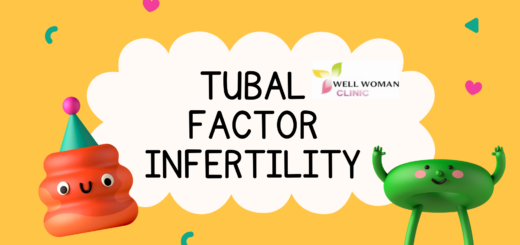𝐂𝐚𝐮𝐬𝐞𝐬 𝐨𝐟 𝐦𝐚𝐥𝐞 𝐚𝐧𝐝 𝐟𝐞𝐦𝐚𝐥𝐞 𝐈𝐧𝐟𝐞𝐫𝐭𝐢𝐥𝐢𝐭𝐲

INFERTILITY
Inability to conceive; Unable to get pregnant
- Primary infertility refers to couples who have not become pregnant after at least 1 year of unprotected sex (intercourse).
- Secondary infertility refers to couples who have been pregnant at least once, but never again.
Causes, incidence, and risk factors are multifactorial. Infertility may be due to problems in the woman, man, or both.
FEMALE INFERTILITY may occur when:
- A fertilized egg or embryo does not survive once it sticks to the lining of the womb (uterus)
- The fertilized egg does not attach to the lining of the uterus
- The eggs cannot move from the ovaries to the womb
- The ovaries have problems producing eggs
- Female infertility may be caused by:
- Autoimmune disorders, such as antiphospholipid syndrome (APS)
- Cancer or tumor
- Clotting disorders
- Diabetes
- Birth defects that affect the reproductive tract
- Excessive exercise, Eating disorders or poor nutrition
- Use of certain medications, including chemotherapy drugs
- Drinking too much alcohol
- Obesity, Older age
- Ovarian cysts and polycystic ovary syndrome (PCOS)
- Pelvic infection or pelvic inflammatory disease (PID)
- Scarring from sexually transmitted infection or endometriosis
- Thyroid disease
- Too little or too much hormones
MALE INFERTILITY:
Male infertility may be due to:
- A decrease in sperm count·Sperm being blocked from being released
- Sperm that do not work properly
- Male infertility can be caused by:
- Environmental pollutants
- Being in high heat for prolonged periods
- Heavy use of alcohol, marijuana, or cocaine or smoking
- Impotence, Infection, Retrograde ejaculation
- Older age
- Cancer treatments, including chemotherapy and radiation
- Scarring from sexually transmitted diseases, injury, or surgery
- Use of certain drugs, such as cimetidine, spironolactone, and nitrofurantoin
In healthy couples under age 30 who have sex regularly, the chance of getting pregnant is about 25 – 30% per month.
A woman’s peak fertility occurs in her early 20s. After age 35 (and especially 40), the chances that a woman can get pregnant drops considerably.
Symptoms
The main symptom of infertility is the inability to become pregnant. Specific symptoms depend on what is causing the infertility. Infertility can cause many painful emotions in one or both partners.
Signs and tests
It is recommended that women less than 30 should generally try to get pregnant on their own for 1 year before seeking testing.
Infertility testing involves a complete medical history and physical examination of both partners.
Blood and imaging tests will be done. In women, this may include:
- Blood tests to check hormone levels, including progesterone and follicle stimulating hormone, luteinizing hormone
- Hysterosalpingography (HSG)
- Pelvic ultrasound
- Laparoscopy and hysteroscopy
- Thyroid function tests
Tests in men may include Sperm testing and rarely Testicular biopsy
Treatment
- Treatment depends on the cause of infertility. It may involve:
- Education and counseling
- Medicines that help the woman grow and release eggs from the ovaries
- Medicines to treat infections and clotting disorders
- Fertility treatments such as intrauterine insemination (IUI) and in vitro fertilization (IVF)
It is important to be aware of and discuss the emotional impact that infertility has on you and your partner, and to seek medical advice from your health care provider.
You can increase your chances of becoming pregnant each month by having sex at least every 3 days before and during ovulation. It is especially important to do so 72 hours before ovulation begins. Yoga has also been found to be helpful in improving success rate. To know how, watch YOGA FOR FERTILITY
Ovulation occurs about 2 weeks before the next menstrual cycle (period) starts. If a woman gets her period every 28 days, the couple should have sex at least every 3 days between the 10th and 18th day after the period starts.
Expectations (prognosis)
About 20% couples diagnosed with infertility eventually become pregnant without treatment.
More than half of couples with infertility become pregnant after treatment, not including advanced techniques such as in vitro fertiliziation (IVF).
Prevention
Preventing sexually transmitted infections (STIs), such as gonorrhea and chlamydia, may reduce your risk of infertility.
Maintaining a healthy diet, weight, and lifestyle may increase your chances for getting pregnant and having a healthy pregnancy.
Take a prenatal or multivitamin containing folate before and during pregnancy. This lowers your risk for miscarriage and developmental problems in the baby.














posted comments